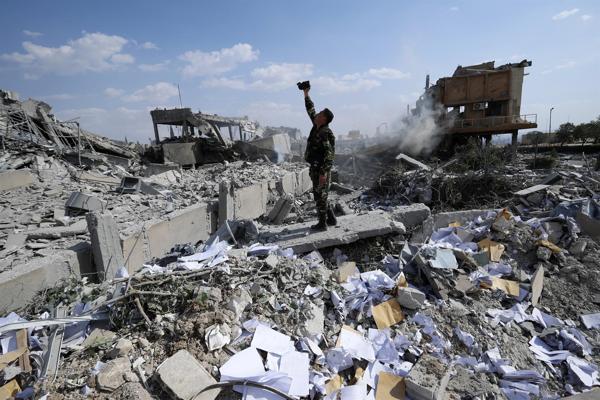Analysis: How should Turkey perceive the Syrian border?
Nihat Ali Özcan


Today Turkey continues to see the Syrian border as one piece, politically. However, the picture is not what it seems to be. Indeed, Turkey is trying to respond to the unique five cases rooting from Syria, extending beyond its borders.
In the coming months and years, Syria will come up with its new constitution. Although the overall trend is in this direction, there are a number of problems that have not yet been dealt with. As a matter of fact, in the meetings President Recep Tayyip Erdoğan held with his Russian counterpart Vladimir Putin and U.S. counterpart Donald Trump at the G-20 summit, Syria had an important place. It should be stated that the highly complex problem of Syria keeps Turkey busy the most. There is even a possibility that questions Bashar al-Assad has in mind are simpler.
We continue to learn new and interesting things from the conflicts and relationships triggered by the Arab Spring and make sense of what happened all over again. The traits, tools, alliances, political, military, legal and moral gray areas of conflict and relations are different from what we know.
Thus, in this context, our 911-kilometer-long border with our southern neighbor Syria is quite permeable and divided into compartments. On top of that, it is dynamic and multifaceted as well. The best response to give to this turmoil starts with understanding the nature of it. Only after that, appropriate targets can be determined and through a model of behavior and organization, we can get somewhere.
In the part of the border that meets with the Mediterranean, there is an Assad regime which has the support of Russia and Iran. This part of the border is one of the calmest places for now. In the second part of the border exists Idlib. There, all the components of the notion hybrid war exist. Around the border there is the Turkish military. Inside of it there are “foreign terrorist warriors,” “armed goods guys” who are supported, “armed radicals” from the loser’s club, thieves, bandits, innocent civilians waiting for their fate, opportunist merchants, intelligence officers and soldiers of the regular army and non-governmental organizations.
As you head eastward, you can see the differences of Afrin. We are talking about a region under the supervision of Turkey, where safety is trying to be established for the settlement of the civilian framework – a region where armed opposition can shift to banditry, militant control can be lost rapidly and where the PKK is active.
The other region that poses a problem is the Azaz-Jarablus line. It is a narrow region where Turkey’s activities to deepen civilian administration and capacity continues, where the responsibility is on civilians and where police and gendarmerie work. It is a field where different problems occur with a need for different organizations, tools and methods.
The fifth region is the east of the Euphrates with influential actors: The region, under the control of the “hybrid enemy” PKK/PYD with the support of the “ally” U.S., where sponsors tend to diversify. The U.S. continues to give military, political, diplomatic and intelligence support to its client PKK/PYD. It demands from the group, to which it has given the vaccination of state, to fight for its own sake. This approach does not only affect the east of Euphrates indirectly but also affects the PKK’s activities in Iraq and Turkey.
As a result, although we are talking about the Syrian issue at the political level, things at the operational and strategic level are complex. It is clear that we have problems differentiating from one another. Each problem requires a separate road map, organizational model, leader, responsibility, a set of rules, and holistic approach.
